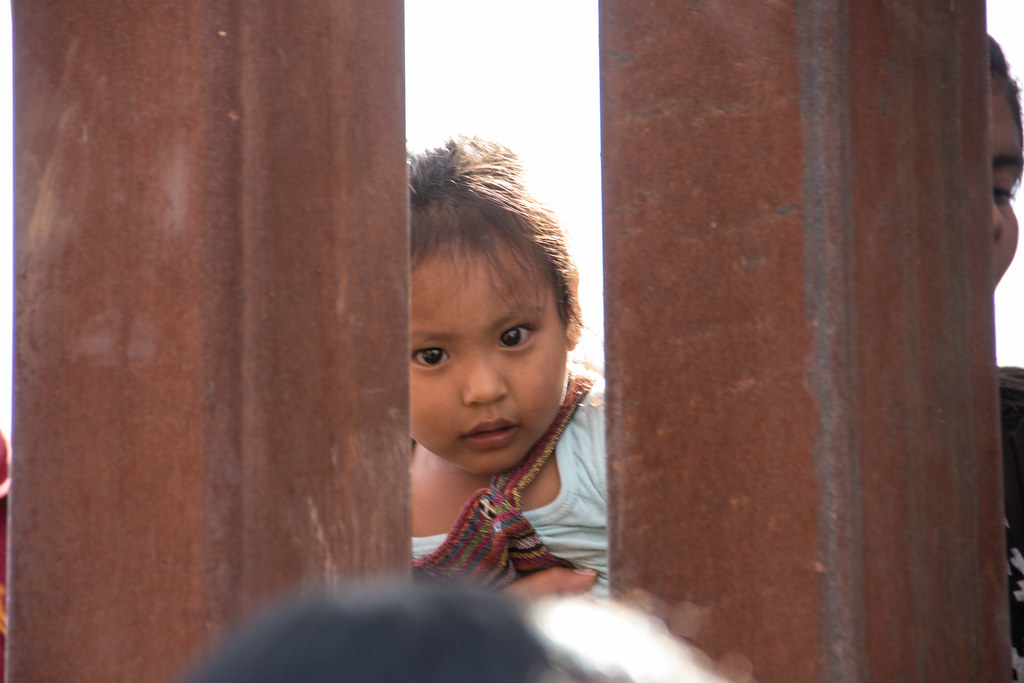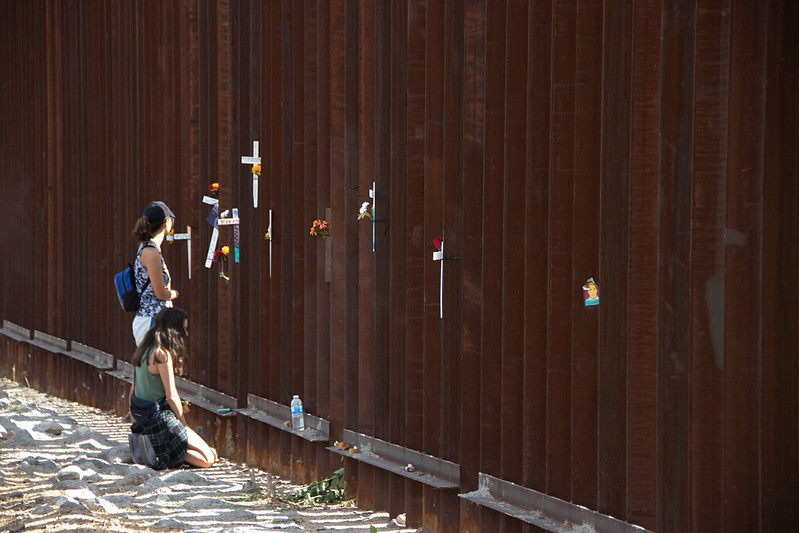Asylum seekers in and of themselves are not a “crisis” for the U.S., nor is an increase in the flow of undocumented immigrants generally—as long as the resources are made available to humanely manage the flow of people.

The legacy of the Trump administration continues to be felt at the U.S. border with Mexico. After four years of increasingly severe actions to restrict access to asylum, including expelling women and children under false cover of the COVID-19 pandemic, the misery Trump left behind is finally being revealed.
Ironically, many Trump supporters are now blaming the Biden administration for the increase in families and children arriving at the U.S. border, arguing this is what happens when we treat immigrants sympathetically. But allowing asylum seekers the chance to make their case in the U.S., as the Biden administration has begun to do by reversing many Trump programs, is not generosity. It is the law.
Reversing course after four years of bad management and disastrous policies is messy. As DHS Secretary Alejandro Mayorkas has repeatedly noted, the Biden administration inherited a gutted infrastructure, one that had done nothing to prepare for eventual increases in arrivals of migrants.
After all, the Trump administration did not have to. It had put into place so many measures to restrict access to the border that it had artificially suppressed the number of people that CBP and ICE would process into the United States.
Trump officials limited the number of people seeking asylum who could present themselves at the border on any given day. They redefined key elements of credible fear screenings and asylum law to make it virtually impossible for many asylum seekers—particularly women—to obtain access to the asylum process.
And even for those who were allowed to see an immigration judge to apply for asylum, Trump’s policies would not let them pursue their case from the United States. Instead, thousands of migrants were forced to “remain in Mexico” in squalid and dangerous makeshift camps.
And when the COVID-19 pandemic hit, the Trump administration wasted no time in declaring that the presence of the undocumented people at the border was a threat not only to safety, but to national security. The CDC issued sweeping and unnecessary rules that limited migration, preventing access to asylum contrary to the law. DHS quickly used the order to establish a new form of immediate removal—known as Title 42 expulsion, for the section of U.S. law invoked by the CDC to limit entry to the U.S.—resulting in more than half a million expulsions between March 2020 and February 2021.
But all of those people did not disappear into thin air. Many made their way back towards the border, hoping to try again, and many others who had not yet crossed waited, hoping for a better day.
So, yes, the election of Joe Biden changed the dynamic at the border. Biden’s numerous executive orders and early changes to immigration policy have reversed some of the worst excesses of the Trump era. Notably, the remain in Mexico program has ended, and those migrants, mostly families, who were forced to live in inhumane conditions are gradually being admitted into the U.S. to pursue their claims.
Similarly, unaccompanied children are no longer subject to Title 42 expulsions, and thus the numbers of kids coming into the U.S. and being placed into the custody of the Office of Refugee Resettlement has been increasing significantly.
But for COVID-19, the initial influx of children would not have been a problem. Before the pandemic, ORR had bed space for 13,000 children on any given day, but safety precautions drastically reduced availability. This led to delays and backups in moving children quickly out of inadequate CBP holding facilities; in the last few weeks, the government has announced plans to open a number of emergency shelter facilities. While many of these facilities will not offer the full range of services usually available, they are designed to quickly process children and reunite them with family members.
Understandably, the administration has refrained from calling the backups and delays a crisis. They have wanted to demonstrate the administration is capable of managing the situation. And it is, provided that Congress funds the necessary infrastructure at a level that recognizes suppressed demand. People are going to come, and the government must be ready.
But there is a crisis brewing. In fact, it is already here. It is a humanitarian crisis, one that has been growing for years in the northern Central America, driven by violence, corruption and the breakdown of government institutions. Women are often at the mercy of their abusers, with little support from the government and virtually no legal protections.
“We must stop pretending that the U.S. can pick and choose when people will flee their countries and ask for asylum at our border.”
Girls and boys are preyed upon by gang members who act with impunity in many parts of northern Central America. Many people flee their homes or go into hiding within their countries before attempting to come to the U.S. And last year’s devastating hurricanes further undermined the economies of the region, leaving many homeless and with no source of income. Moreover, the hurricanes are likely a harbinger of what is to come, as experts predict climate change will continue to lead to instability and despair throughout Central America.

In other words, people are going to continue to flee to the U.S. unless the situation at home drastically changes. Biden’s executive order on Central American migration and asylum polices recognizes this need and lays the groundwork for long-term planning for funding and reforms that could help Central America recover and rebuild.
But all of that is in the future. For the present, we must stop pretending that the U.S. can pick and choose when people will flee their countries and ask for asylum at our border. Asylum seekers in and of themselves are not a “crisis” for the U.S., nor is an increase in the flow of undocumented immigrants generally—as long as the resources are made available to humanely manage the flow of people.
Trump supporters and hangers-on boast the “success” of Trump’s immigration policies, demonstrated by the supposed drop in illegal entries. But this is merely an “out of sight, out of mind” approach to managing a very real problem. It was a giant sleight of hand which hid the actual number of people seeking entry into the U.S. Biden’s policies have pulled back the curtain and like so many other aspects of Trump’s administration, it is clear that the claims of success are nothing more than fantasies.
With the Deportation of Thousands of Haitians, the Biden Administration Is Not Off the Hook
And yet the Biden administration is not off the hook. While it did agree to permit unaccompanied children to enter the U.S. despite the Title 42 ban, it did so following a preliminary injunction issued by a federal court last November. DHS continues to expel families, as well as single men and women, under the existing Title 42 order.
Many of these families are from Haiti, another country in which lawlessness, poverty and government abuses are rampant. Thus far, according to an important report by the Haitian Bridge Alliance, the Quixote Center and the UndocuBlack Network, more Haitians (1,200) were expelled in the first two months of the Biden administration than in the preceding year. Many of those expelled were family groups, and none of them received a screening before being flown back to Haiti to determine whether their fears of imprisonment, torture or death should be examined by an immigration judge.
DHS has also continued to engage in expulsions of Mexicans and Central Americans that are astonishing in their disregard for basic dignity. For example, DHS recently flew 149 migrants—including many women and children—600 miles from the border crossing where they entered and deposited them on the Mexico side an international bridge linking El Paso and Ciudad Juarez. The migrants had no idea where they were and again, had no chance to present their cases for protection.
These incidents mar the vision of humane immigration policy that Biden has laid out and continue to undermine the United States’ efforts to regain its place as a leader in refugee protection.
Despite the clear moral and legal imperatives to stop Title 42 expulsions, the Biden administration is clearly worried that returning to pre-pandemic processing of asylum seekers will overwhelm the system. It is also clear that they fear a political backlash if critics are able to characterize the border as out of control.
Taking these final steps takes courage and political will. Those of us who support the rights of asylum seekers have to let the administration know that doing the right thing will not tarnish its reputation and that we will work even harder to ensure that making good on humane immigration policy is not political suicide.
Protecting asylum seekers is a woman’s issue of the first order. We must encourage and challenge both the administration and Congress to live up to U.S. obligations. We must turn out at the voting booth to support candidates and elected officials who act on behalf of asylum seekers. And we must push back, every way we can, against those who hope to weaponize the border in a callous effort to turn following the law into a political liability.
Up next:





